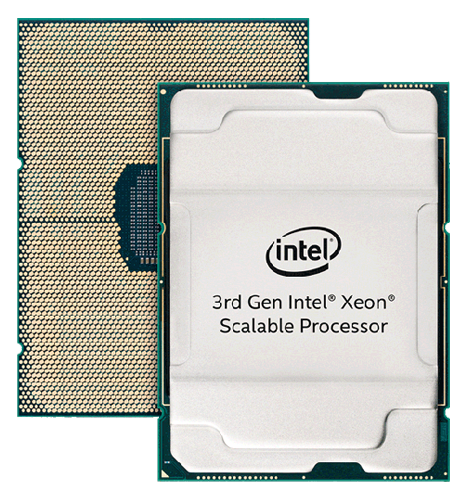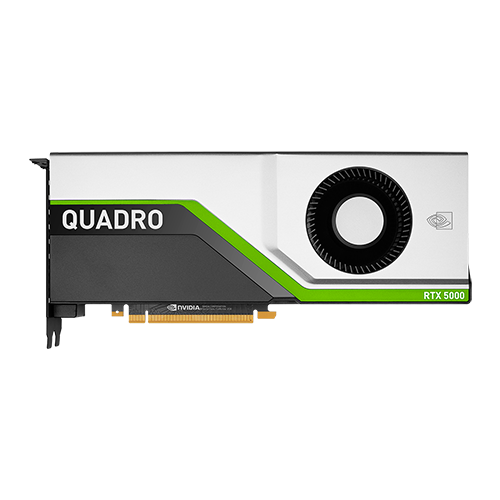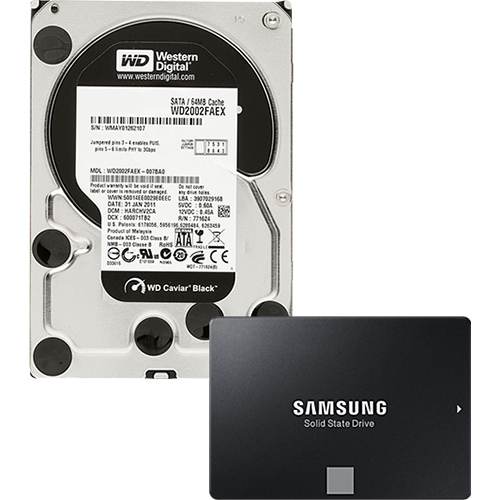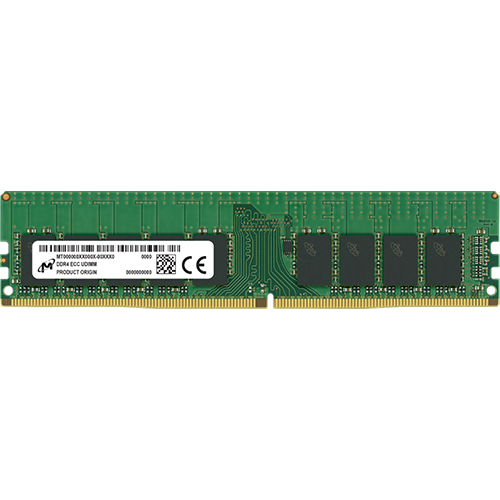
DaVinci Resolve
Originally designed for Hollywood’s elite colorists, DaVinci Resolve has been used on more feature films and TV shows than anything else because it lets you create images that are simply impossible with other tools. DaVinci is also the world’s fastest growing and most advanced editing software.
Hardware Recommendations
 Processor
Processor
Color Grading, Exporting
In general, more CPU cores will give you better performance in Resolve (especially when exporting) but with the exception of the free edition of Resolve it is generally better to spend you budget on more or higher-end GPUs before spending it on a more powerful CPU.
If working with 2K footage go with a single socket workstation. For 4K, 6K and 8K, a dual processor system is recommended with dual graphics cards.
H.264, ProRes, DNxHR
According to benchmarks, if working primarily with these codecs, it's best to stick with a single processor system as there is little to no performance gain with a dual CPU system.
R3D Footage
If you use R3D footage there can be very noticable performance gains with a dual Xeon workstation.
 Graphics
Graphics
Premiere Pro and After Effects take advantage of the GPU. We recommend a GPU with at least 8GB of memory. Multiple GPUs will speed up export and rendering.
6K/8K production recommendations
NVIDIA GeForce RTX 4080 Super
NVIDIA Quadro RTX A6000 / A5500 / A5000
NVIDIA Quadro RTX 6000 Ada / 5000 Ada
4K production recommendations
NVIDIA GeForce RTX 4080 Super / 4070 Super
NVIDIA Quadro RTX A5000 / A4500
NVIDIA Quadro RTX 4500 Ada / 4000 Ada
A common question we get is whether to go with a GeForce or Quadro graphics card and what the main differences are. In short, the actual graphics processor powering both series of cards is exactly the same. In fact, the processors come off of the same assembly line.
So why does the Quadro cost multiples more than the GeForce? The main reason is because the target customers for Quadro cards, namely large content production studios and engineering firms can afford these cards which allows NVIDIA to charge a premium for the couple extra features they enable.
However the GeForce and Quadro cards are not quite the same. For example, NVIDIA controls the specifications and quality assurance on all Quadro cards, while with GeForce cards the specifications and quality assurance are managed by the third party board partners. Furthermore, Quadro cards are a little more reliable because NVIDIA chooses the higher quality graphics chips for them. This results in better reliability, lower power consumption and lower heat output. In addition, Quadro cards have a larger video memory frame buffer that features error correction technology.
In terms of drivers, Quadro cards also get special drivers that are validated for professional grade applications such as for 3D modeling, animation, etc.
 Storage
Storage
We recommend a NVMe SSD for the operating system, applications and project files. 1TB is the most common capacity for DaVinci Resolve workstations. 1TB is fine if your projects are moderately sized. 2TB is recommended if your projects are large and you will you will use the workstation for a variety of professional applications.
If your projects are complex, are running multiple applications as the same time, and you want to maximize performance, we recommend two SSDs:
- Primary NVMe SSD: operating system and applications
- Secondary NVMe SSD: dedicated to active projects
For storage or backup, we recommend a SATA SSD or Hard Drive.
M.2 NVMe Gen4 SSD performs at ~5,000MB/s
2.5-inch SATA SSD performs at ~500MB/s
3.5-inch SATA Hard Drive performs at ~250MB/s
The Z Turbo Drive Dual Pro yields maximum performance - remarkable drive speeds combined with massive SSD capacity. Supporting two M.2 NVMe SSDs on one PCIe Gen4 slot, each achieving 5000MB/s, the Z Turbo Drive Dual Pro is the ultimate footage drive. With the Intel Virtual RAID on CPU (Intel VROC), the NVMe SSDs can be partitioned in RAID array.
- RAID0 for performance - two NVMe Gen4 SSDs in RAID0 will result in combined drive speeds and capacity. For example, two 4TB SSDs will result in a 8TB RAID0 partition performing at 10,000MB/s or 10Gb/s speeds ideal for your active editing/footage partition.
- RAID1 for redundancy - two NVMe Gen4 SSDs in RAID1 will result in fast performance with redundancy. For example, two 4TB SSDs will result in a 4TB RAID1 partition performing at 5,000MB/s or 5Gb/s speeds while maintaining the 2nd drive is a mirror. If one drive fails, your data will be safe.
 Memory
Memory
In general, 4GB of RAM per CPU core is recommended. For example, if you select a single 12-core processor, 32GB will suffice for basic tasks or 64GB for more demanding workloads.
With video editing, the amount of RAM required generally depends on the resolution of the video and the complexity of your timeline. As a general rule of thumb we recommend 24GB/32GB/48GB if you work with 1080p footage, 48GB/64GB/96GB for 4K footage, 96GB/128GB/196GB for 6K footage, and 196GB/256/384GB if you work with 8K footage.
Configuration Recommendations
HP Z8 G5 Fury Workstation
$21,175
HP Z6 G5 A Workstation
$16,225
HP Z6 G5 Workstation
$10,975
HP Z4 G5 Workstation
$8,325
HP Z2 G9 Tower Workstation
$4,875
HP Z2 G9 Tower Workstation
$3,975
Running additional applications on this system?
The recommended components and configurations provided on this page are specific to this software. If you plan on running other applications, view our recommendations for them as well and choose a configuration that best suits the needs of the application requirements collectively. Feel free to contact us for further assistance.
 3ds Max
3ds Max  Act-3D
Act-3D  After Effects
After Effects  AMBER MD
AMBER MD  ANSYS
ANSYS  ARCHICAD
ARCHICAD  Arnold
Arnold  Audition
Audition  AutoCAD
AutoCAD  Blender
Blender  BodyPaint 3D
BodyPaint 3D  Catia
Catia  Cinema 4D
Cinema 4D  Corona Renderer
Corona Renderer  DaVinci Resolve
DaVinci Resolve  Digital Performer
Digital Performer  DIGITS
DIGITS  Flame
Flame  Fusion
Fusion  Harmony
Harmony  Hauptwerk
Hauptwerk  Houdini FX
Houdini FX  Illustrator
Illustrator  InDesign
InDesign  Inventor
Inventor  Keyshot
Keyshot  Lightroom
Lightroom  Live
Live  Mari
Mari  Maxwell
Maxwell  Maya
Maya  Media Composer
Media Composer  Modo
Modo  MotionBuilder
MotionBuilder  Mudbox
Mudbox  Navisworks
Navisworks  Nuke
Nuke  OctaneRender
OctaneRender  Photoshop
Photoshop  Premiere Pro
Premiere Pro  Pro Tools
Pro Tools  ReCap 360
ReCap 360  RenderMan
RenderMan  Revit
Revit  SketchUp
SketchUp  Solid Edge
Solid Edge  Solidworks
Solidworks  TensorFlow
TensorFlow  Unreal Engine
Unreal Engine  V-Ray Next
V-Ray Next  VMware
VMware  ZBrush
ZBrush  OctaneRender
OctaneRender  RenderMan
RenderMan  V-Ray Next
V-Ray Next  Unreal Engine
Unreal Engine